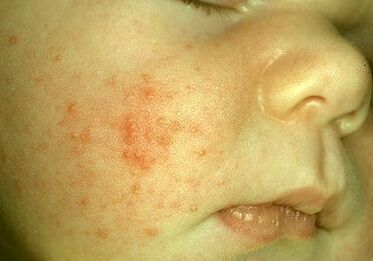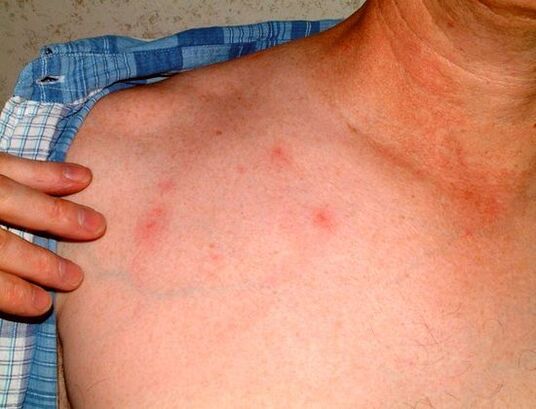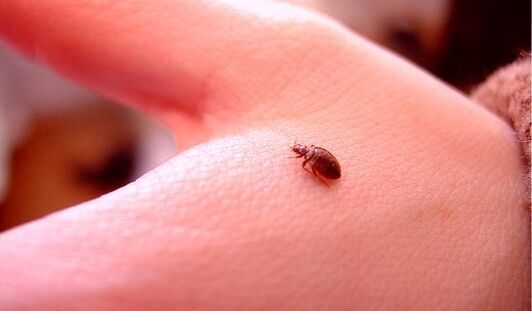
What do you know about human parasitic diseases? The diversity of human parasites is not limited to internal helminths.
There are certain types of parasites that enter and live under the skin of a person, causing the same unpleasant symptoms as internal parasites.
In addition, the variety is not limited to helminthiasis - there are ticks, insects and protozoa.
Each of them has certain symptoms and manifestations that you need to know.
It is equally important to know how to get rid of subcutaneous parasites.
Types of parasitic skin diseases
What parasites can live under human skin? Insects, helminths, ticks and protozoa are the most diverse, including single-celled organisms. Damage to human skin due to various types of parasites is divided into a separate category of parasitic diseases.
Each disease group is associated with characteristic pathogens:
- The simplest organisms cause protozoal skin diseases.
- Ticks cause acaric lesions of the skin.
- Insects can cause entomotic skin lesions.
- Helminthiasis develops as a result of infection with helminths.

All of these pathogens of human skin parasitic diseases are equally unpleasant and require diagnosis and treatment. Long-term neglect can lead to irreversible consequences, from blindness to death. Fortunately, most of the list of parasites living under human skin is typical of countries with hot and humid climates.
Diseases caused by protozoa
Leishmaniasis
Leishmaniasis is caused by the simplest, single-celled pathogens carried by mosquitoes. A person infected with leishmaniasis becomes a reservoir for further spread of the infection. After being bitten by a mosquito, which is the main host of Leishmania, a person develops skin or visceral leishmaniasis. Skin leishmaniasis manifests itself as deep ulcers or pustules and extensive skin lesions. The mucocutaneous form of the disease causes significant deformities of appearance, especially the face. In leishmaniasis, airway edema can be fatal.
Leishmaniasis is found in 90 countries around the world and is widespread in Syria, Iran, Afghanistan, Saudi Arabia, Brazil and Peru.
Diseases caused by ticks
Demodectic mange
A disease caused by a parasite that lives in the sebaceous glands under the skin and in the follicles of human hair. This is a microscopic tick - demodex. It is mainly localized in the eyelids, facial skin and ear canals. Rarely - on the chest and back.
Demodex damage causes complex acne and dermatitis that worsen in the spring and fall. The skin looks red, hyperemic, swollen, inflamed. The ciliated edge of the eyelid is usually swollen, red, the lashes are glued together, there is a crust-like discharge at the edge of the eyelid, and lash loss is characteristic. Sometimes the disease persists without overt manifestations, so the tick is conditionally considered a pathogen. Usually, demodicosis is exacerbated in people with impaired immunity, diseases of the gastrointestinal tract, lungs and metabolic diseases.
Do not itch
Another disease caused by ticks is called itching. These ticks gnaw where they lay their eggs on human skin. The development of an adult tick is accompanied by a complex period. This process usually occurs at night, so the itching of the skin intensifies. The main diagnostic sign of the presence of parasites under a person's skin looks like double red small dots nearby. These are double passages bitten by a tick.

The patient is complicated by various infections brought by the patient to relieve itching: streptoderma, nodular seals, blood clots around the scratches, rashes in the form of bloody blisters and other skin lesions. Complex itching can resemble urticaria, pyoderma, dermatitis, eczema, psoriasis.
The infection is usually caused by prolonged contact with sick people (itching has been shown to be skin-to-skin contact for up to 30 minutes; do not reduce the risk of infection when using ordinary household items).
Diseases caused by insects
All skin diseases caused by diphtheria are collectively called myiasis.
Wolfartiosis
The disease is caused by an insect called wolfarth fly, which infects the larvae on the mucous membranes or wounds of the human body. The larvae destroy tissues by releasing a special enzyme, causing severe pain, necrosis, edema, pus and gangrene in the affected tissues. They usually parasitize the eyes, nose and ears. Wolfarth flies are widespread in countries with hot and temperate climates.
Diseases caused by helminths
Dirofilariosis
Disease caused by roundworms. The source of infection is pets - cats and dogs. The carrier is a mosquito. After the bite, as a rule, sexually mature individuals of nematodes parasitizing under the human skin begin to develop. Insect bites become more intense, inflamed and itchy. A characteristic feature of the pathogen is its ability to move under the skin, so the disease is accompanied by a feeling of movement, crawling inside the inflammatory seal. Sometimes a nematode may appear under the skin; describes the cases of a person coming out of the mucous membrane of the eye.
Allergic reactions, fever, nausea and weakness may be accompanied by symptoms.
Strongiloidosis
A disease caused by parasitic larvae, a person must walk on the ground barefoot. Outbreaks of strongyloidiasis are found in Georgia, Ukraine, Krasnodar and Stavropol Krai. Roundworm larvae penetrate the skin and migrate under it, causing redness, itching and red blisters.
Treatment recommendations
General recommendations have been developed for the treatment of diseases caused by this or that human subcutaneous parasite. The most important for our region is the treatment of strongyloidiasis, pruritus and demodicosis. Treatment is prescribed after the diagnosis of the disease and only by a specialist. Some complications and manifestations of the disease require an individual approach to treatment.
- Treatment of helminthiasis with antiparasitic drugs is recommended.
- Ointments, creams and other effective remedies are used to treat itching. A treatment regimen and a system of preventive measures have been developed for people in contact with pruritus.
- Demodex treatment is carried out with complex measures to strengthen the immune system, treat gastrointestinal diseases and other procedures. Ointments for the treatment of itching are used directly on the skin, as well as various cosmetic procedures.

Subcutaneous parasitic diseases require effort to treat, so it is better to prevent infection by following the rules of personal hygiene. It is no longer necessary to know the general symptoms that accompany such diseases in order to avoid close contact with sick people.




























